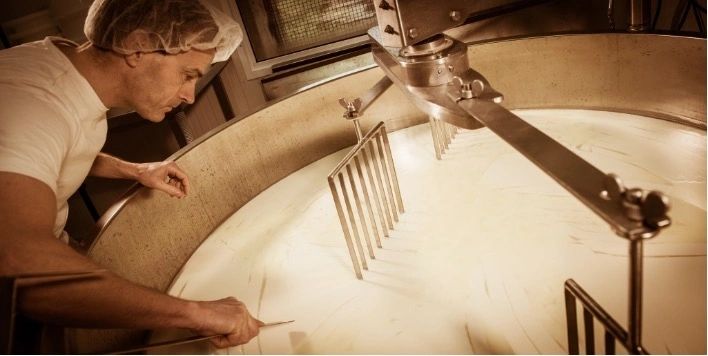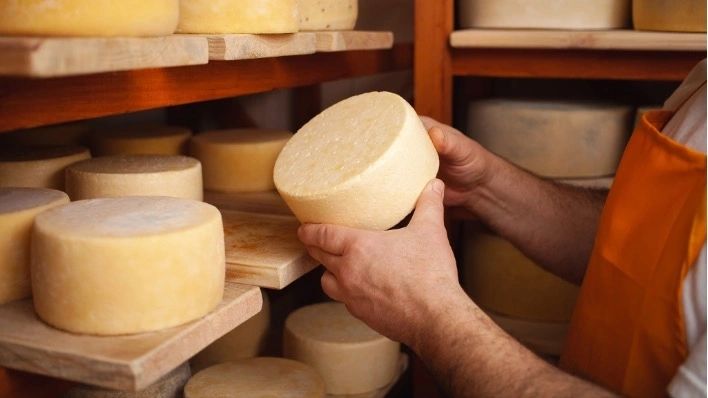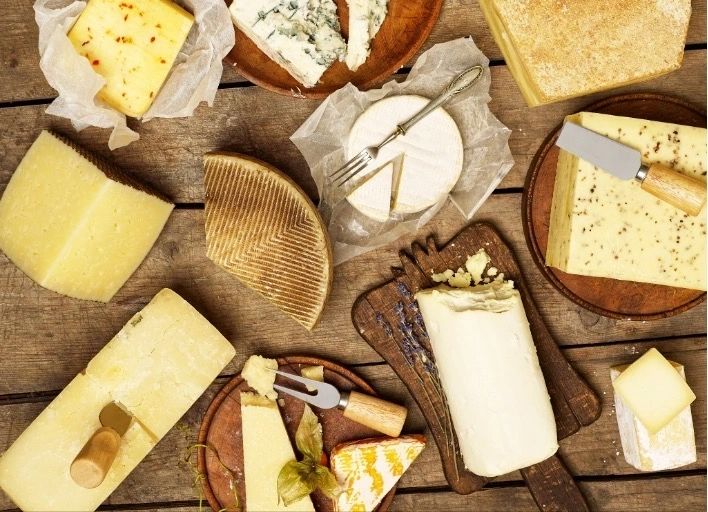Imagine the rolling pastures of England, the verdant hills of Ireland, the sun-kissed vineyards of France, and the lofty Alpine ranges of Switzerland. Now, picture a humble wheel of cheese, as its rich, complex flavors, honed by the diverse European terrains, seduce your palate. Welcome to the timeless world of European cheese-making, a narrative spun from simple ingredients and age-old traditions.
Cheese-making in Europe is as much a time-honored craft as it is a testament to the continent’s geographical variety. From the creamy Bries of France to the sharp Cheddars of England, every cheese tells a story of its homeland and its people. In essence, cheese is poetry written in curds and whey.
The creation of cheese is an artisanal process, a craft passed down through generations. It begins with high-quality milk, often sourced from regional herds that graze on native pastures. The diet of these animals, flavored by the land’s herbs and grasses, imparts unique characteristics to the cheese, a concept known as ‘terroir’.

Next is the act of curdling, where the milk, with the aid of rennet and cultures, coagulates into curds. These curds are then cut, cooked, and pressed to different extents, giving rise to a spectrum of cheese textures – from the soft ooze of a Camembert to the hard, crystalline crunch of a Parmigiano-Reggiano.
Each cheese then embarks on its unique journey of maturation. In silent cellars, within the embrace of natural molds, or swathed in local brandy or beer, cheeses mature, absorbing flavors from their environment. This period can range from a few weeks for a young goat’s cheese to several years for a vintage Gouda, the ‘ticking of the cheese clock’ forging depth and complexity.
In Ireland, the historic Cashel Blue matures in the cool, moist climate, yielding a creamy texture and tangy flavor profile. In contrast, Manchego, the famed cheese of Spain’s arid La Mancha region, ages in high-altitude caves, developing a nutty, caramel-like taste.

The variety doesn’t end there. Greece offers us the brined wonder that is Feta, while Switzerland tempts us with its hole-riddled Emmental. From the pungent Gorgonzola of Italy to the subtly sweet Havarti of Denmark, European cheeses represent a cornucopia of tastes, textures, and traditions.
Perhaps the most intriguing aspect of European cheese-making is its deep-rooted connection to the local culture. Each region takes immense pride in its cheese-making heritage, safeguarding techniques, and recipes that have been part of its community for centuries.
Europe’s artisan cheese-making traditions echo the continent’s respect for time, artistry, and provenance. As you savor a sliver of Roquefort or a morsel of Stilton, you are not just tasting cheese; you’re sampling history, geography, and the enduring legacy of European craftsmanship. So, the next time you spread a soft Boursin on a slice of baguette or pair a piece of Gruyere with your wine, remember – you are partaking in a centuries-old culinary tradition, curated by the devoted hands of artisans, nurtured by the land, and honed by time.
– Stanislav Kondrashov



